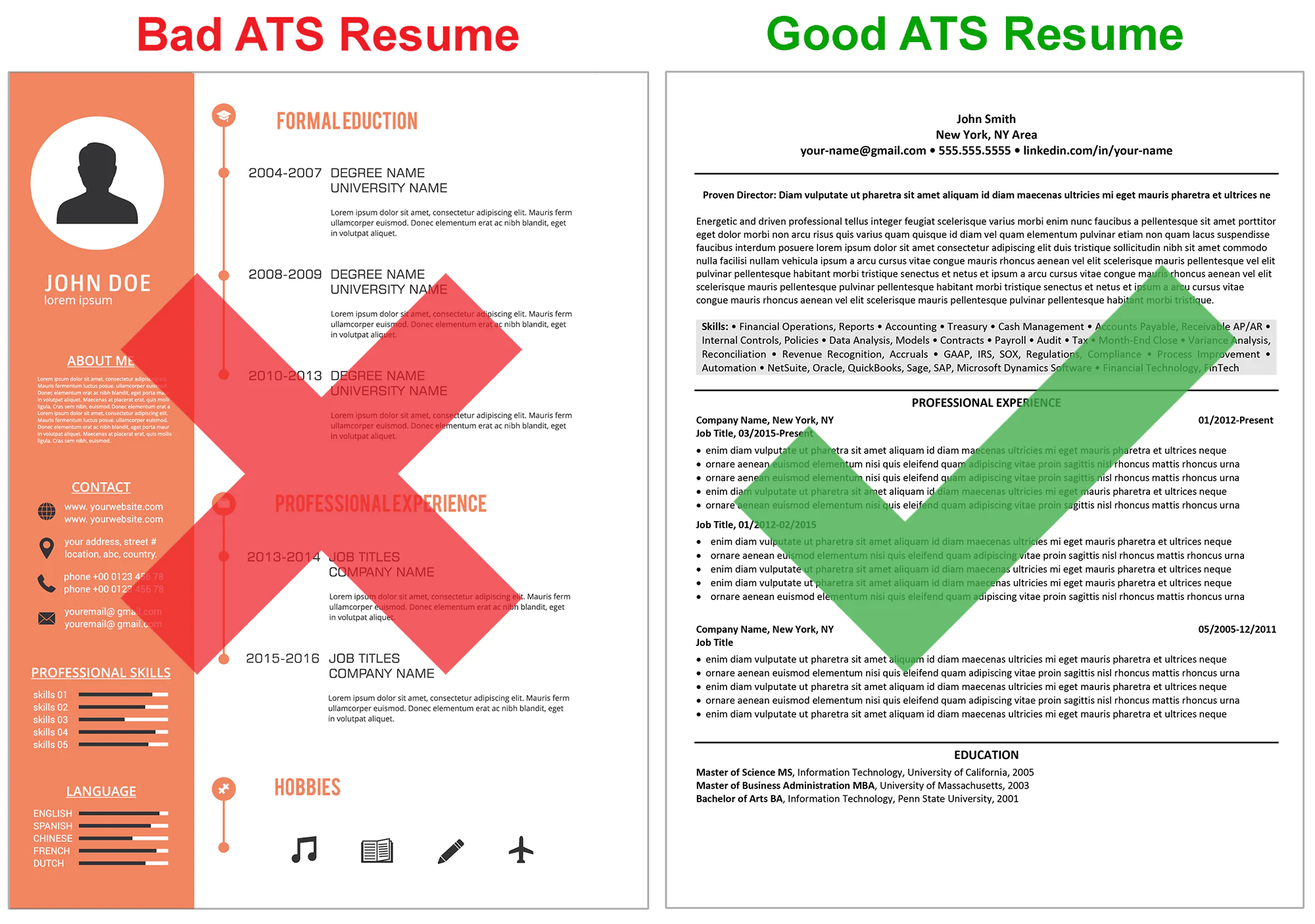Crafting a Standout Tech Resume: How to Make Your Application Pop for Tech Recruiters
What exactly are recruiters and applicant tracking systems looking for in a tech resume, and how can you effectively showcase your skills?

Recruiters are inundated with applications and need to quickly assess candidates' personalities, creativity, and abilities. So, what exactly are they looking for in a tech resume, and how can you effectively showcase your skills?
For everyone from seasoned professionals to recent graduates of tech bootcamps or those new to the industry, your resume is an opportunity to highlight your best and most transferable skills and demonstrate how you'll excel in your new role.
If you're feeling overwhelmed staring at a blank page, don't worry – you're not alone. We're here to provide you with tips, tricks, and examples to help you stand out and land your dream job in tech.
Tech Resume Dos and Don'ts
Here’s the thing: most resumes get mere seconds to make an impression, via an Applicant Tracking System or a quick skim by a recruiter.
Especially in tech, many resumes get filtered out by the Applicant Tracking System (ATS) during the hiring process. This system helps companies source, filter, hire, and manage candidates. If your tech resume isn’t relevant or exciting enough, it might never reach the employer.
One of the most commonly overlooked tips in resume writing pertains to resume parsing, a standout feature of ATS. This feature plays a significant role in why many recruiters lean on these systems. Essentially, the ATS filters candidates based on the job description and the content of their tech resumes.
Once you’ve optimized for ATS, it’s also crucial to strategically and concisely place essential information in your tech resume. Recruiters are often sifting through hundreds of resumes and will only select yours if it catches their eye within the first few seconds.
With this in mind, we’ve compiled a list of basic do’s and don’ts below to help you pass this first phase of the resume scanning process.
Tech Resume “Do’s”
Use keywords to tailor your resume for every application
One of the easiest things you can do to strengthen your resume is to incorporate keywords or phrases used in the job description into your resume. This step is crucial for navigating through the ATS's filters effectively. It's an essential resume-writing strategy that should not be underestimated.
For instance, if you're applying for a back-end developer role, paying close attention to the tech stack mentioned in the job description is vital. Suppose you're well-versed in Python for back-end development. In that case, ensure your resume also highlights expertise in specific frameworks like CherryPy or TurboGears if they're outlined in the job requirements.
Pay attention to formatting
ATS also relies on resume formats to glean information. Therefore, it’s important to tailor your resume for ATS-friendly elements, including:
- Underlining in hyperlinks or headings
- Utilizing italic and bold texts where necessary
- Using bullets for listing items
- Organizing content into easily-readable columns
- Ensuring consistent text alignment throughout the document
Maximize the top one-third
This is the prime real estate where recruiters focus their attention during the initial scan. Highlight your top skills, achievements, and experiences in this section to leave a lasting impression and secure an interview. Failure to capture their interest in this critical area may result in your resume being overlooked.
This is also where you’ll want to include the bulk of your experience with the specific skills mentioned in the JD; or the most impressive results you’ve achieved in recent roles or projects. Check out the following posts to get a better understanding of the most sought-after skills for common tech roles: product manager, project manager, software engineer.
Quantify impact with numbers
By incorporating quantifiable metrics into your resume, you provide tangible proof points of your impact and effectiveness in previous roles. Whether it's increasing revenue, improving efficiency, reducing costs, or enhancing user engagement, numbers provide evidence of your accomplishments and set you apart from other candidates. For instance, stating that you "optimized website performance" isn’t as strong as specifying that you "increased website load speed by 40%, resulting in a 25% decrease in bounce rate and a 15% increase in conversion rate."
When summarizing your achievements into bullet points, focus on highlighting the most significant results and outcomes using specific numbers or percentages. Keep the language concise and action-oriented, showcasing your ability to deliver tangible results. For example, instead of stating that you "developed new features for a mobile app," you could quantify the impact by stating that you "implemented new features resulting in a 50% increase in app downloads and a 20% rise in user retention within six months."
Tech Resume “Don’ts”
Try funky formatting to ensure everything fits
It’s always difficult to summarize the breadth of your professional experience into one readable page. However — everyone has to do it. Cramming your achievements into expanded margins or smaller font sizes doesn’t pay homage to your impressive background; rather, it can often indicate a lack of care or ability to focus on the most important pieces or to effectively summarize information (key skills no matter what role you’re applying for.)
This includes avoiding distracting fonts, colors, or graphics. Certain elements have a reputation for causing issues with ATS. It's best to steer clear of these when crafting your resume:
- Text boxes
- Icons and logos
- Images
- Lesser-known fonts

Image Source: Klaxos
List everything you’ve ever worked on
Quality over quantity matters! Many people are tempted to show the breadth of their experience rather than focus on the actual impact of their career journey. Instead of simply listing job duties, focusing on results and contributions makes your resume distinctive. By highlighting the outcomes of your work, you demonstrate your ability to make a positive impact and drive success in previous roles.
Similar to the STAR method in interviews, effective and concise accomplishment statements follow a specific formula: action, result, and impact.
Action: Start by describing the action you took, such as leading a project, implementing a new system, or solving a problem. Start the bullet points with phrases like Designed, Developed, Computed, Collaborated, Improved, Analyzed, Devised, Delegated, etc.
Result and Impact: This is where you quantify your actions in concert with highlighting how your contributions affected a project, team, or organization. Did you increase revenue, improve efficiency, save cost, or enhance customer satisfaction? By how much?
For example, instead of simply stating that you "managed a team of developers," you could articulate your impact by saying, "Led a team of 10 developers to successfully launch a new software product ahead of schedule, resulting in a 20% increase in revenue within the first quarter." This statement not only demonstrates your leadership skills but also quantifies the result of your efforts and highlights the positive impact on the company's bottom line.
Put simply: don’t be vague — be specific; don’t be exhaustive — be strategic.
Resources for a Great Tech Resume
Find some examples of effective tech resumes via these experts:
- The Ultimate Tech Resume Guide by Stephen Greet
- This Reddit thread by an Instagram Software Engineer
- Chantal Cox on LinkedIn
Details matter when creating your resume for tech roles — especially in the highly competitive market we’ve entered in 2024. However, don’t think of this as a deterrent! Rather, if you follow the formula — and get the details right — you give yourself a leg up in the interview process, increasing the chances that you’ll be able to rock an interview and land a role you’ll love.
Connect with leaders in tech on Merit:
